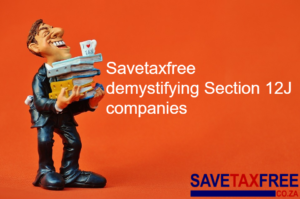The ETF Monthly Review: April 2019
The ETF Monthly Review
Welcome to this month’s ETF Review, a neat update of market news affecting ETFs, as well as a set of favourite funds chosen by the Intellidex team. We collaborate with Intellidex to bring you the latest insights on ETFs – probably the niftiest way to invest!
IN THIS ISSUE:
What happened in the markets in March?
- Local and global equities experience the best quarter in years
- China manufacturing recovers
- Global cohesion to stimulate growth
- US-China trade deal negotiations encouraging
Our favourite ETFs
- Domestic equities: Satrix SA Quality ETF
- Foreign equities: Satrix MSCI World ETF and Satrix MSCI Emerging Markets
- Bonds and cash: NewFunds TRACI 3 Month (short term); Satrix ILBI ETF, Stanlib Global Bond ETF and Ashburton World Government Bond ETF (long term)
- Dividend/income funds: Stanlib SA Property ETF and Sygnia Itrix Global Property ETF
- NEW in Commodities: Standard Bank Africa Rhodium ETF
What’s happened in the markets?
The first quarter of 2019 was somewhat contradictory. Concerns of a slowing global economy and trade tensions, which caused much volatility, were overshadowed by some of the best equity performances in recent memory, both at home and offshore. It was the best quarterly gain for the S&P500 since 2009, which climbed 13.1% — albeit off a low base created in Q4 of last year when investors sold off extensively. Similarly, the JSE all share index gained 7.1%, marking its best performance in a given quarter since 2007.
However, March (which is the focus of this review) accounts for only 0.8 percentage points of the all share index’s first-quarter gains. The S&P500 gained 1.8% in March. The equally weighted portfolio of JSE listed ETFs, excluding commodity ETFs, rose 2% while Intellidex’s portfolio underperformed, edging up 1.4%.
The dim global outlook at the beginning of the year characterised by heightened China-US trade tensions and slowing growth looks like it is now in the rear-view mirror. Prospects are set to improve as the trade negotiations are progressing well between the two economic giants. Also, there seems to be more global cohesion to stimulate growth using both monetary and fiscal tools. If this is augmented by a China-US trade deal it could propel global equities for the rest of the year.
Locally, the sluggish economy, deteriorating government finances, elections-outcome uncertainty,
Intellidex’s favourite ETFs
Each month the investment gurus at Intellidex scan the market to come up with a list of their favourites.
Phibion Makuwerere, CFA, explains:
We classify all ETFs into six broad categories:
- domestic equities
- international equities
- bonds and cash
- dividend or income-focused
- multi-asset
- commodities (we initiate coverage this month)
Various empirical studies show that the bulk of equity returns stem from diversification among broad asset classes rather than from individual stock picking. As such, our grouping is done with a diversified portfolio in mind, ensuring appropriate exposure to different asset classes. First, we group the ETFs according to the three widely recognised asset classes – equities, bonds and cash. We further split equities into geographic groupings.
We then add a category for equity ETFs with an income theme.
Our picks should provide an investor with a relatively diversified portfolio, even if it was made up only of ETFs. However, asset allocation is not a one-size-fits-all concept. You need to make sure that weights of different asset classes in your portfolio meet your unique risk-and-return objectives. Multi-asset ETFs, which are already diversified among asset classes, are analysed as a separate category.
As a rule of thumb, we like ETFs that follow a simple but watertight investment philosophy. They should also be tax smart, which means they should qualify to be in a tax-free savings account. To avoid overconcentration, a good ETF should cap its exposure to a single sector and/or a single counter. While ETF costs are still coming down as competition among local providers intensifies, we look at this metric closely and prefer ETFs with low total expense ratios (TERs). An overview of our favourite funds for each category follows.
The April favourites:
Domestic equity: Satrix SA Quality ETF
Satrix SA Quality ETF remains our preferred choice. The ETF selects constituent companies using a set of quality metrics, including return on equity, liquidity and leverage. The top 20% of all JSE-listed companies with the highest scores based on those criteria are included in the fund and weighted by market capitalisation but capped at 10% of the fund.
load shedding and the extent of the rot at Eskom coming to light, are some of the primary factors flashing warning lights for local equities.
Even international rating agency Moody’s was wishy-washy with its opinion on SA, but maintained an investment grade rating, though we get the sense that it is kicking the can down the road.
However, rand hedges could provide some respite. Naspers, which accounts for more than a fifth of the local market, is on a path to unlock more value – following its successful unbundling of Multichoice – through separately listing some of its assets in Amsterdam.
Local markets: April performance
The JSE all share index edged up 0.8% in March driven by the rand hedges and large caps (+1.2%). Sentiment towards SA stocks remains subdued as small (-2.5%) and medium (-3.1%) capitalisation stocks continue to underperform their large-cap counterparts. The equally weighted portfolio of ETFs that tracks JSE-listed companies edged up by 0.51%, while a portfolio of commodity funds rose 1.56%.
The market was buoyed by mining stocks (+3.8%) and some industrial counters, specifically the rand hedges. The best fund in March, the NewFunds S&P GIVI South African Industrial ETF, rose 5.68% and was followed closely by a bunch of resources funds. However, banks (-6.0%) and retailers (-6.4%) were
Empirical evidence shows that portfolios sorted on factors such as profitability and earnings quality generate high risk-adjusted returns relative to a market portfolio. However, the size of the premium varies, depending on the metrics used to calculate the quality score. The Satrix fund is a perfect fit for our 2019 outlook of a volatile local equity market. It lost 0.59% during March.
Foreign equities developed markets: Satrix MSCI World ETF
In this category we like the Satrix MSCI World Equity Feeder ETF (up 3.62% in March) and the Ashburton Global 1200 Equity ETF (up 7.03%). They diversify their exposure across the US, Europe, Japan, Canada and Australia. With more than half of the funds invested in US stocks, investors will still have substantial exposure to the US.
Satrix MSCI World beats Ashburton Global 1200 Equity ETF on costs. Other more focused international equity themes include property and technology funds. These are worth considering for tactical or other investor-specific reasons.
Foreign equities, developing markets: Satrix MSCI Emerging Markets ETF
The choice in this segment is limited to two funds: Satrix MSCI Emerging Markets (+3.80%) and the Cloud Atlas AMI Big50 (+4.16%). Unlike the Cloud Atlas fund which invests in African stocks only, the
under pressure given their huge exposure to the struggling South African economy, exacerbated by disappointing economic indicators.
The FNB/BER Civil Confidence Index, which measures construction activity, hit its lowest level ever recorded of 10 points in the fourth quarter of last year. Similarly, the Absa Purchasing Managers Index fell to 45.0 points in March from 46.2 in February, the third consecutive month of decline. As such the Satrix Fini ETF was the biggest loser, declining 4.81% in March.
In commodities, Standard Bank Africa Rhodium ETF climbed 20.62% in March as policy developments in Europe and China continue to drive its demand. However, the two palladium funds gave up some of their gains of recent months, shedding more than 7% each in March.
International markets: April performance
Global equities were lifted by a dovish stance from the US Federal Reserve, positive trade talks between China and the US and the Chinese fiscal stimulus which is beginning to pay off.
In China, both manufacturing PMI index readings eclipsed the 50-point mark (which separates expansion from contraction) in March from less than 50 in the previous two months.
JSE funds that track companies listed on international stock exchanges were further buttressed by the weakening rand. International property and tech funds were impressive. Coreshares S&P Global Property rose 7.9% while Stanlib S&P 500 Info Tech and Satrix Nasdaq 100 increased 6.89% and 6.28% respectively.
Satrix fund invests in a wider range of emerging economies, including some of the fastest-growing markets such as China and India. In addition, the fund is the cheapest within its category with a TER of 0.4%.
Dividend or income-theme funds
If you rely on your investment income for day-to-day expenses, you may want to allocate a portion of your portfolio to ETFs that have a high distribution ratio.
Property funds tend to have the highest payout ratios. We maintain our choice of the Stanlib SA Property ETF (-1.51%). The Stanlib fund boasts the lowest TER in the segment. For foreign property funds, the Sygnia Itrix Global Property ETF (+5.97%) is the cheapest in this category.
Bond and cash funds
Bonds should find their way into a well-diversified portfolio due to their risk-diversification attributes. If you are investing for a very short period, usually less than a year, then the NewFunds TRACI 3 Month (0.56%) is a natural choice because it is least sensitive to sudden adverse interest rate movements. You can also park your funds in a money market fund if you’ve a lump sum that you wish to put down as a deposit for big-ticket item purchases like a house or car while you shop around. It’s a better option than putting money in a current account that does not earn interest.
For a longer investment horizon, protecting your investment against inflation is paramount. We maintain our choice of the Satrix ILBI ETF (-0.84%), which has the lowest expense ratio in this category. Furthermore, nominal bonds add a unique risk-return
dimension that differs from inflation-linked bonds and improves overall portfolio performance. As with equities, investors also need to diversify their bond portfolios internationally. Our choice is the Stanlib Global Bond ETF (+3.76%) which tracks investment-grade sovereign bonds mostly issued by the US, UK, Japan and selected European countries. The Stanlib Global Bond ETF has the lowest TER in this category.
Diversified funds
If you find the process of diversifying your portfolio daunting, two ETFs can do it for you. They combine equities and bonds to produce a diversified portfolio for two investor archetypes with differing risk appetites: Mapps Protect ETF (+0.62%) is more conservative, usually suitable for older savers. Mapps Growth ETF (+1.37%) suits investors with a longer-term horizon.
Commodities: Standard Bank Africa Rhodium ETF
Adding a commodity ETF to your portfolio improves diversification because commodities march to the beat of their own drum when compared with broad markets, which makes them an excellent portfolio diversifier.
Traditionally, gold is the preferred addition to an investor’s portfolio because over longer periods it has shown to be the least correlated with other assets. However, our preference based on our medium-term outlook is between rhodium and palladium. The new vehicle emission laws in Europe and China are driving demand for both commodities and this is expected to continue in the foreseeable future.
We are slightly more inclined towards rhodium because it is scarcer, with lower extraction rates from PGM ore. The primary production of rhodium is somewhat inelastic and is expected to decline moderately over the medium term. However, gaining exposure to both commodities is not a bad idea.
Important note: This ETF does not qualify for a tax-free savings account.






